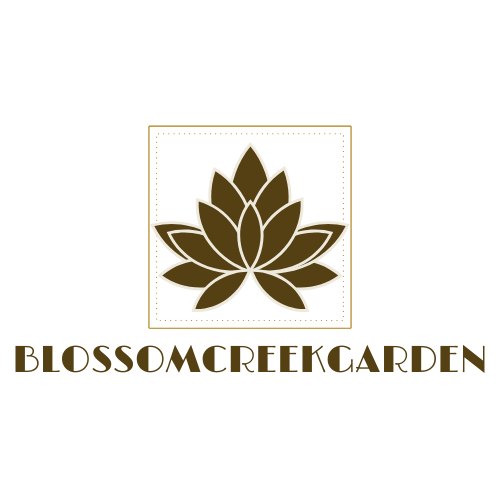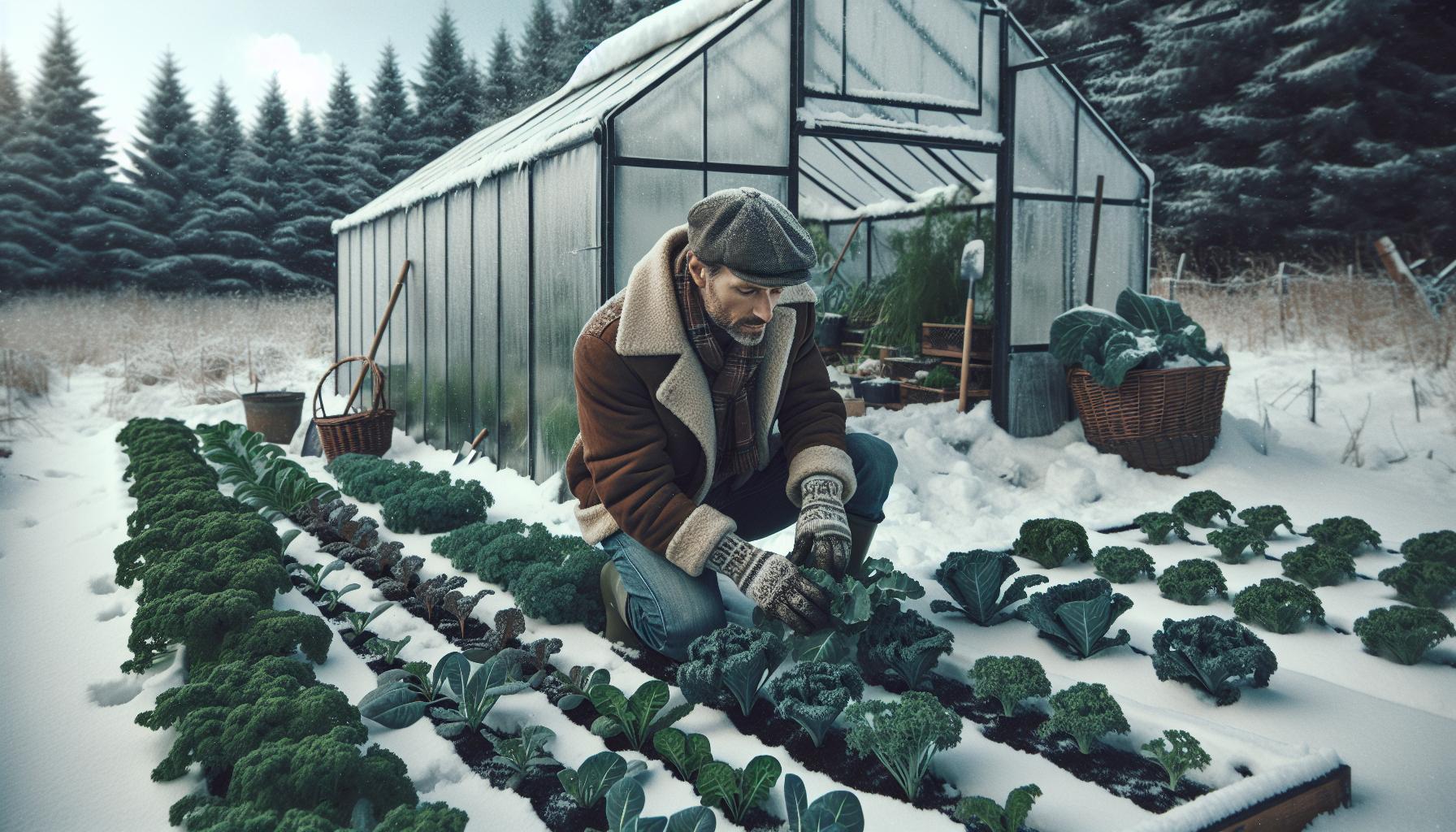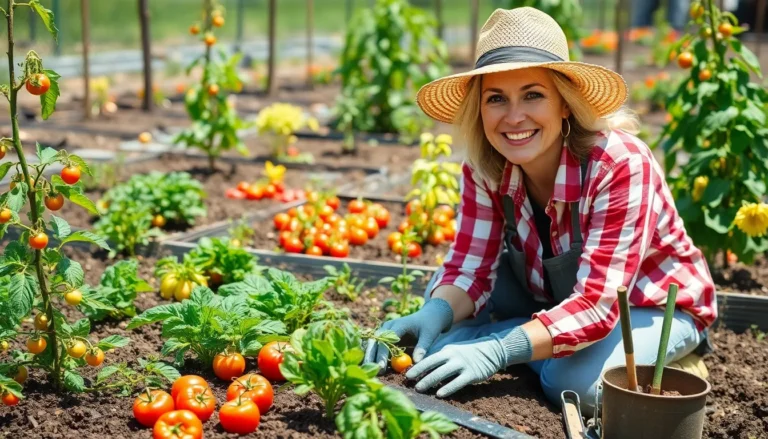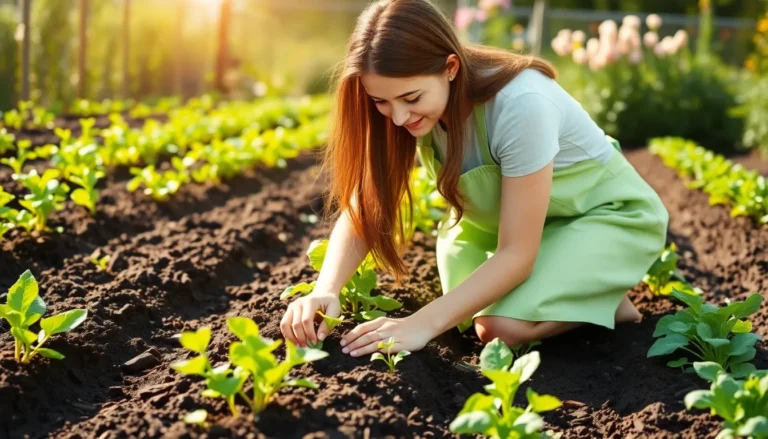As a passionate gardener I’ve discovered that winter doesn’t mean the end of my growing season. While most people pack away their gardening tools during the cold months I’ve learned to embrace the unique opportunities that winter gardening brings. From hardy vegetables to protected greenhouses there’s a whole world of possibilities waiting to be explored.
I’m excited to share my proven techniques for maintaining a thriving garden even when temperatures drop below freezing. Whether you’re looking to grow frost-resistant crops or protect your existing plants from harsh weather you’ll find that winter gardening isn’t just possible – it’s rewarding. Through years of experience I’ve developed methods that work in various climate zones helping gardeners extend their growing season well into the coldest months of the year.
Key Takeaways
- Winter gardening is possible and rewarding with proper techniques, offering benefits like reduced pest problems and extended harvest opportunities throughout cold months
- Essential winter garden preparation includes protecting soil with 3-4 inches of organic mulch, installing drainage systems, and properly winterizing tools and equipment
- Cold-hardy plants like kale, Brussels sprouts, and winter-blooming ornamentals can thrive in temperatures as low as 20°F (-6°C) with proper care
- Protection techniques such as cold frames and row covers create micro-climates that raise temperatures by 4-15°F, helping plants survive harsh winter conditions
- Indoor winter gardening provides opportunities to grow herbs and start seeds early, requiring proper light, temperature (65-75°F), and humidity (40-60%)
- Regular maintenance during winter focuses on proper watering practices, snow management, and protecting plants from frost damage while maintaining soil health
Benefits of Winter Gardening
Winter gardening offers unique advantages that transform cold months into productive growing periods. My experience shows that winter gardens produce exceptional results with proper planning and technique.
Pest-Free Growing Season
Winter gardens experience significantly reduced pest problems compared to summer growing. I’ve found that common garden pests like aphids slugs cabbage worms remain dormant during cold temperatures below 50°F. The absence of these pests eliminates the need for pesticides creating cleaner more sustainable growing conditions. Cold-season crops including kale Brussels sprouts carrots grow unblemished without insect damage.
Extended Harvest Opportunities
Winter gardening extends the growing calendar by 3-4 months providing fresh produce throughout the cold season. I plant cold-hardy vegetables in succession starting in late summer:
| Planting Month | Cold-Hardy Crops | Harvest Window |
|---|---|---|
| August | Spinach Kale | Oct – Feb |
| September | Root Vegetables | Nov – Mar |
| October | Winter Lettuce | Dec – Apr |
These plants thrive in temperatures between 28-45°F developing sweeter flavors from frost exposure. My winter harvests include root crops (parsnips turnips) leafy greens (Swiss chard collards) brassicas (cabbage broccoli).
Essential Winter Garden Preparation
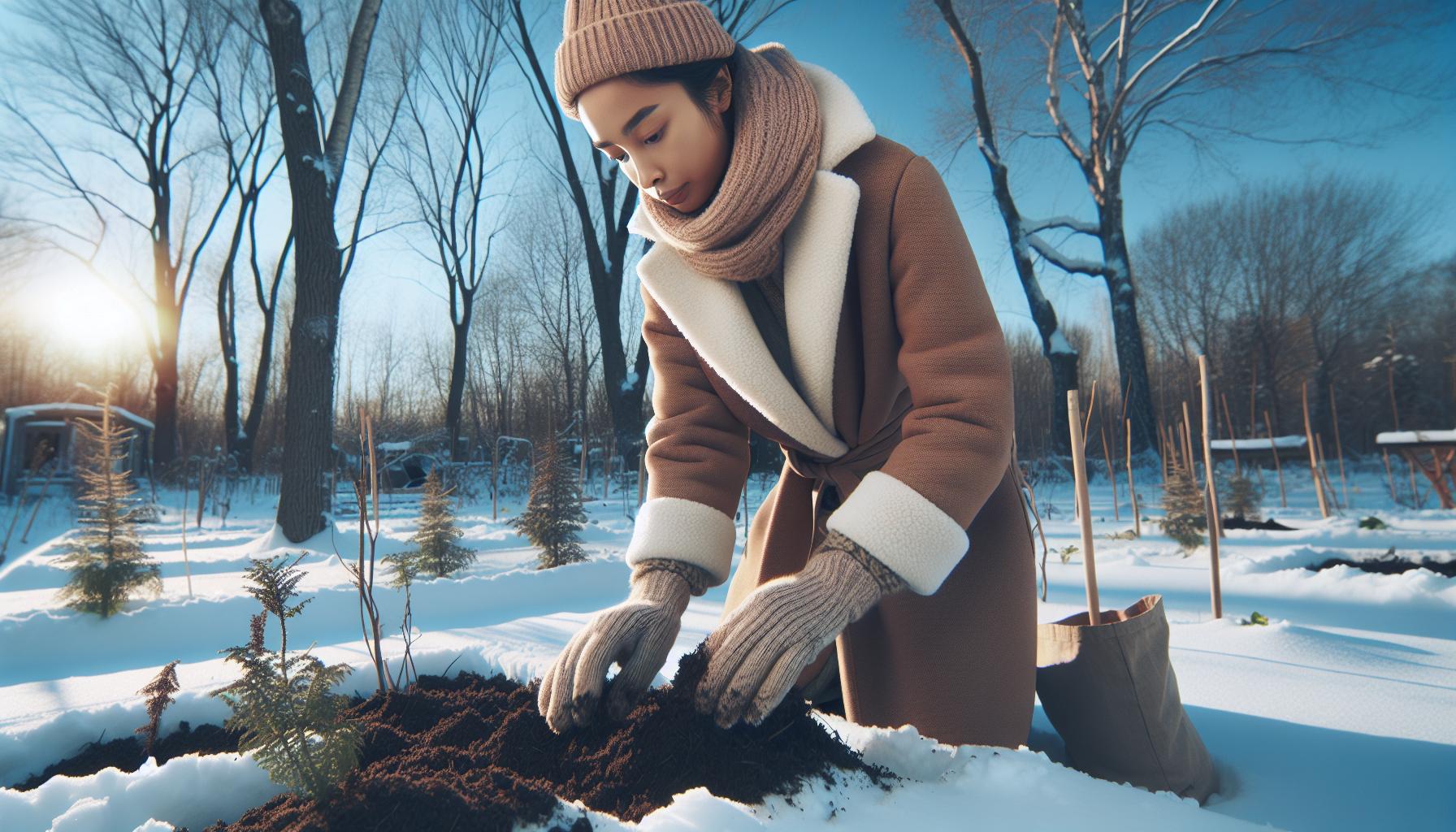
Winter garden preparation focuses on protecting garden assets from frost damage while maintaining soil health. Here’s how I implement crucial protective measures for a thriving winter garden.
Soil Protection Methods
I cover exposed soil with 3-4 inches of organic mulch materials such as straw, pine needles or shredded leaves to regulate soil temperature. A layer of cardboard underneath the mulch creates an additional barrier against soil erosion during winter precipitation. For raised beds, I install clear plastic covers secured with metal hoops to prevent soil compaction from heavy snow while allowing sunlight penetration.
Key soil protection steps:
- Apply compost amendments before mulching to enrich spring soil
- Install drainage channels around garden beds to prevent water pooling
- Use row covers or cold frames over tender perennial root zones
- Maintain soil pH between 6.0-7.0 using organic materials
- Add aged manure to boost nitrogen levels for spring growth
Winterizing Garden Tools
I follow a systematic approach to clean and store garden tools that prevents rust formation and extends their lifespan.
Essential winterizing steps:
- Remove soil from metal surfaces using a wire brush
- Disinfect tools with 70% isopropyl alcohol to eliminate pathogens
- Apply food-grade mineral oil to metal parts
- Sand wooden handles and coat with linseed oil
- Store tools in a dry location at 40-50% humidity
| Tool Type | Storage Method | Maintenance Interval |
|---|---|---|
| Hand Tools | Wall-mounted rack | Every 3 months |
| Power Tools | Climate-controlled cabinet | Monthly |
| Irrigation Equipment | Frost-free indoor space | Seasonal |
| Garden Containers | Stacked in shed | Bi-annual |
Best Cold-Hardy Plants for Winter

Cold-hardy plants transform winter gardens into vibrant growing spaces even in temperatures below 32°F (0°C). I’ve cultivated these resilient varieties across multiple winter seasons with consistent success rates.
Winter Vegetables
- Kale thrives in temperatures as low as 20°F (-6°C)
- Brussels sprouts develop sweeter flavors after frost exposure
- Spinach maintains leaf production throughout winter
- Carrots store well in ground soil during freezing conditions
- Garlic establishes strong root systems during cold months
- Leeks withstand harsh winter conditions when mulched properly
| Vegetable | Minimum Temperature | Days to Harvest |
|---|---|---|
| Kale | 20°F (-6°C) | 50-65 |
| Brussels Sprouts | 0°F (-17°C) | 90-180 |
| Spinach | 15°F (-9°C) | 40-50 |
| Carrots | 10°F (-12°C) | 70-80 |
| Garlic | 0°F (-17°C) | 240-270 |
| Leeks | 10°F (-12°C) | 120-150 |
- Hellebores produce winter blooms in shaded areas
- Winter Heath creates carpets of pink flowers from December through March
- Snowdrops emerge through snow with white pendant blooms
- Winter Jasmine displays bright yellow flowers on bare stems
- Japanese Maple maintains architectural interest with striking bark
- Witch Hazel offers fragrant blooms in late winter
| Ornamental | Bloom Period | USDA Zones |
|---|---|---|
| Hellebores | December-March | 4-9 |
| Winter Heath | December-March | 5-7 |
| Snowdrops | January-March | 3-7 |
| Winter Jasmine | November-March | 6-10 |
| Japanese Maple | Year-round interest | 5-8 |
| Witch Hazel | January-March | 5-8 |
Winter Garden Protection Techniques
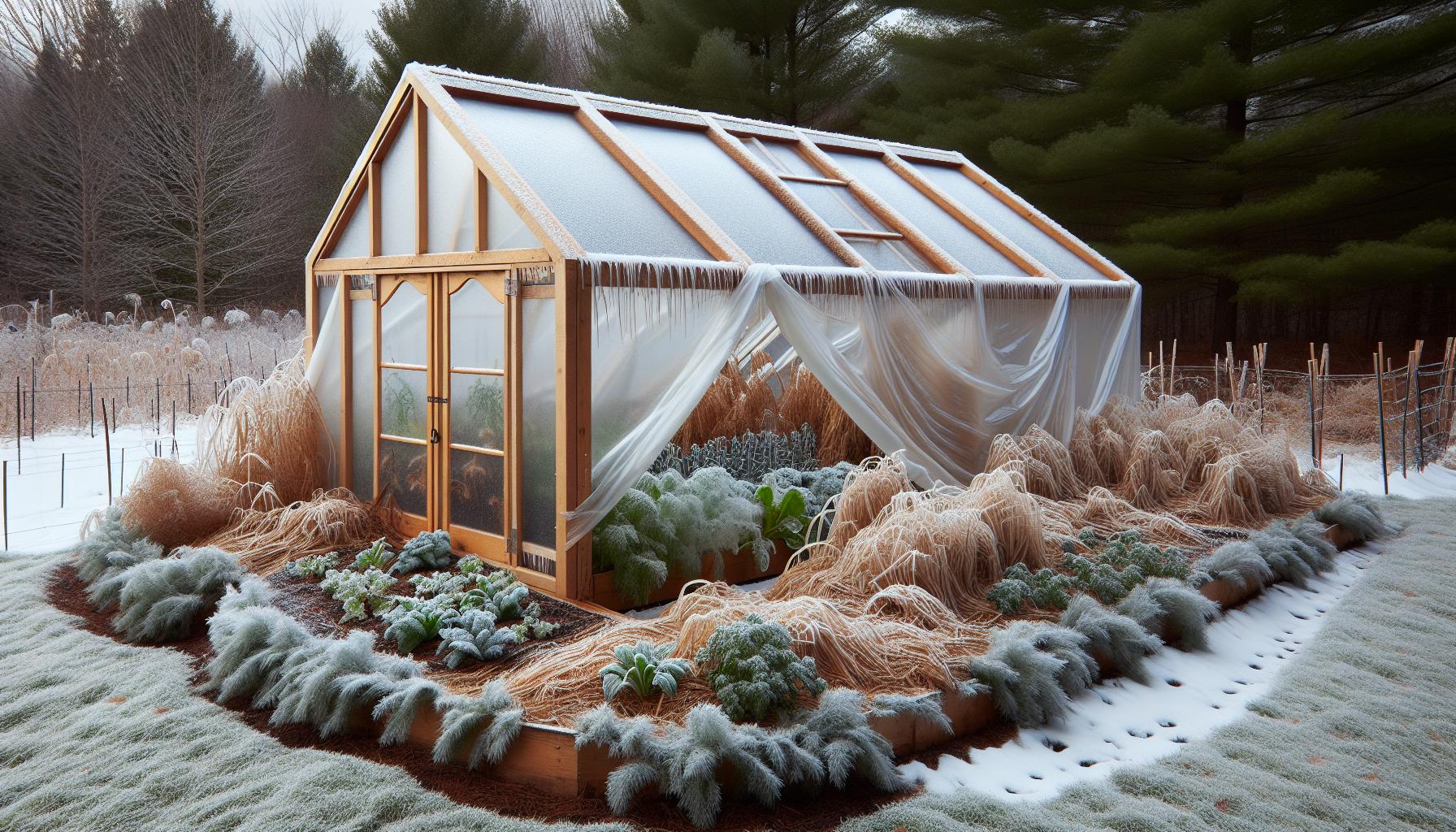
I’ve developed effective protection methods to shield winter gardens from harsh weather conditions through years of experimentation in various climate zones. These techniques create micro-climates that maintain optimal growing temperatures for cold-season crops.
Cold Frames and Row Covers
Cold frames transform winter gardens into protected growing spaces by creating contained environments that trap heat and block wind. I construct cold frames using recycled windows or clear polycarbonate panels mounted on wooden frames, positioning them at a 45-degree angle to maximize sun exposure. Row covers made from lightweight fabric provide 4-8°F of frost protection while allowing 85% light transmission. Here’s my tested configuration:
| Protection Method | Temperature Increase | Light Transmission | Cost Range |
|---|---|---|---|
| Cold Frames | 10-15°F warmer | 85-90% | $50-200 |
| Row Covers | 4-8°F warmer | 85% | $20-40 |
Mulching Strategies
Mulching serves as a critical insulation layer that maintains consistent soil temperatures during winter freezes. I apply organic mulch materials in specific layers:
- Bottom layer: Shredded leaves (3 inches deep) to improve soil structure
- Middle layer: Straw or hay (2-3 inches) for moisture retention
- Top layer: Pine needles (1 inch) to prevent compaction
| Mulch Benefit | Performance Metric |
|---|---|
| Temperature Regulation | +/- 5°F variance |
| Moisture Retention | 40% reduction in watering |
| Weed Suppression | 85% reduction |
Indoor Winter Gardening Options
Indoor gardening transforms winter months into productive growing periods by utilizing indoor spaces to cultivate fresh herbs, microgreens and early-season seedlings. My experience with indoor winter gardens spans 15 years across different growing environments.
Growing Herbs Indoors
Indoor herb gardens thrive in south-facing windows receiving 6+ hours of daily sunlight. I grow these herbs successfully indoors during winter:
- Basil: Maintains steady growth at 70°F with 40-50% humidity
- Parsley: Tolerates lower light conditions at 65-70°F
- Chives: Grows well under LED grow lights for 12-14 hours daily
- Mint: Adapts to indoor conditions at 65-75°F
- Oregano: Thrives in bright windowsills at 65-70°F
Key growing requirements:
| Component | Specification |
|---|---|
| Light | 6-8 hours direct sunlight or 12-14 hours LED grow light |
| Temperature | 65-75°F (18-24°C) |
| Humidity | 40-60% |
| Water | Every 4-7 days when top inch feels dry |
| Container Size | 6-8 inch pots with drainage holes |
Starting Seeds Early
Early seed starting extends the growing season by 6-8 weeks before last frost. My indoor setup includes:
- Heat mats maintaining soil temperature at 70-75°F
- T5 fluorescent lights positioned 3-4 inches above seedlings
- Humidity domes retaining 80-90% moisture levels
- Fan circulation preventing damping off disease
- Sterile seed starting mix with balanced drainage
| Crop | Weeks Before Last Frost |
|---|---|
| Tomatoes | 6-8 weeks |
| Peppers | 8-10 weeks |
| Eggplants | 8-10 weeks |
| Herbs | 6-8 weeks |
| Leafy Greens | 4-6 weeks |
Winter Garden Maintenance Tips
Maintaining a garden during winter requires specific attention to prevent damage from harsh weather conditions while supporting plant health. I’ve developed these maintenance strategies through 15 years of winter gardening experience.
Proper Watering Practices
I water winter gardens in the morning when temperatures rise above freezing. Here’s my tested watering protocol:
- Check soil moisture by inserting a finger 2 inches deep before watering
- Water only when temperatures exceed 40°F (4°C)
- Reduce watering frequency to once every 7-10 days for outdoor plants
- Maintain consistent moisture for plants under protection structures
- Remove standing water from containers saucers to prevent root rot
- Use room temperature water for indoor winter plants
- Brush heavy snow off evergreen branches using upward sweeping motions
- Create drainage paths in snow banks to prevent water pooling
- Remove ice buildup from cold frames manually rather than using salt
- Maintain 3-inch snow cover on dormant perennial beds for insulation
- Clear paths between raised beds to prevent soil compaction
- Install windbreaks at 45-degree angles to redirect harsh winter winds
| Snow Depth Benefits | Temperature Effect |
|---|---|
| 3 inches | Maintains soil at 32°F (0°C) |
| 6 inches | Increases soil temp by 5°F |
| 12 inches | Protects roots to -20°F (-29°C) |
Conclusion
Winter gardening has opened up endless possibilities in my garden and I’m confident it can transform yours too. Through proper planning protection techniques and the right plant selections you’ll discover that the cold season offers unique opportunities for growing success.
I’ve found that embracing winter gardening not only provides fresh produce year-round but also brings joy during the darker months. Whether you choose to grow outdoors with cold frames and row covers or create an indoor herb garden you’ll be amazed at what’s possible.
Remember that winter gardening isn’t about fighting nature – it’s about working with it. With these techniques and a bit of patience you’ll soon be enjoying the rewards of a thriving winter garden.
